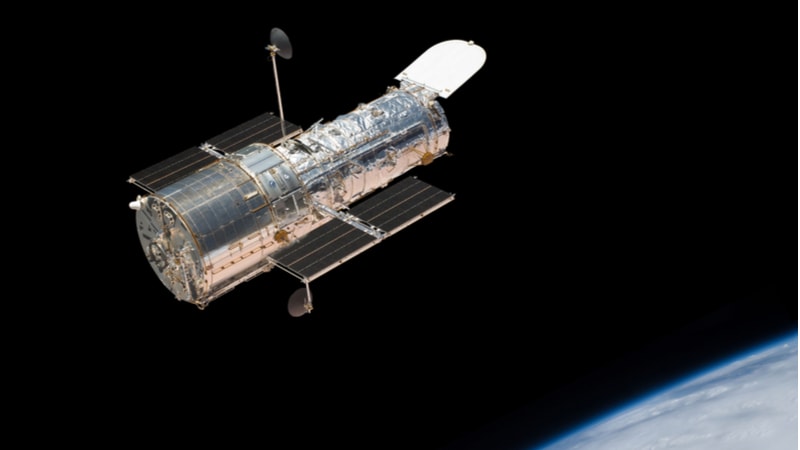
While some of the most impressive tech in the world flies high above our heads, the Space Telescope Science Institute (STScl), operated by NASA for the Association of Universities for Research in Astronomy, is working to bring the tech on the ground into the 21st century as well, explained Susan Reed, IT Manager at STScI, during ServiceNow’s Knowledge 2019 conference on May 7.
The Institute manages the Hubble Space Telescope’s observations, scheduling, and support.
They will support the new James Webb Space Telescope, set to launch in 2021. With unparalleled technology under its care, STScI offers astronomers around the world the opportunity to expand human knowledge with new observations.
Until recently, the STScl team managed scheduling (astronomers use the telescope remotely), answered questions, provided updates on availability, and addressed technical issues primarily via email, which worked, but as they planned their expanding mission with the addition of the James Webb Space Telescope, they saw a need and opportunity to modernize and improve service to their astronomer customers.
“It was always one mission – it was Hubble,” explained Reed. As STScl’s IT team planned for the addition of the James Webb Space Telescope, they considered how they could modernize scheduling, inquiries, and support requests.
Reed and team had a wish list – she wanted to create a knowledge base for self-help, provide immediate responses to questions, offer search capabilities on the knowledge base, and resolve issues on first contact – capabilities to provide the best possible experience for their astronomer customers, and the fastest resolution to questions and issues.
The team planned to implement ServiceNow – first, IT Service Management (ITSM). But, after consultation and a second look, they shifted the strategy and implemented ServiceNow’s Customer Service Management (CSM) solution as the first step and foundation.
ServiceNow’s CSM solution enables organizations to create cases based on customer issues, allowing the organization to track activities related to resolving the issue. It also helps route cases to the correct level of support, based on the customer submitting the case and the issue at hand.
“…The further down the journey I went, I realized we do need Service Management [first]. It’s so much better to have things come in as a case,” Reed said. She also had a requirement to get data to people more quickly, and found CSM the best way to facilitate.
STScI revised their current ITSM workflows, mapped what needed to change, and used ServiceNow’s Business Management Module to manage stories, tasks, and deliverables as they implemented the new solution – the STScI Space Telescope Action Request System (STARS).
The stars did align for the modernization effort; the new system is delivering benefits for internal teams as well as external customers. Reed noted that STARS has sites for each of STScI’s missions, enabling IT to grant specific permissions for individual users, while still supporting linkages and lateral movement for privileged internal users who are working across multiple missions.
The solution enables the IT team to share/communicate request levels and trends to the executive level with confidence – and importantly, gives STScl visibility into all open cases for all users. With this information and context, the team can direct issues to the right level of support, so issues are resolved quickly, improving the customer experience.
The ability to direct the issues to the right resource internally also improves the employee experience and the productivity of the full team. Junior team members can address appropriate issues, supporting their career growth. System engineers and network engineers stay focused on the complex requests.
Recognizing it is better to convince than force users to make a change, the platform accommodates holdouts who refuse to leave the email system, as emails open new tickets in ServiceNow’s CSM platform. But Reed noted that her metrics show the emails are steadily dropping as the community goes straight to the platform.
Throughout her speech, Reed noted that implementing change among a highly technical, highly knowledgeable, and somewhat skeptical user base is never easy. Describing the effort to change minds as “the biggest challenge,” she stressed the need for an internal modernization champion.
“I am not known as Susan Reed at Space Telescope – I am known as Susan Now,” Reed joked.
As Reed worked to build consensus for the modernization efforts and drive adoption, she shared white papers detailing Customer Service Management implementations at similar organizations to demonstrate what’s possible. She recognized the need for and implemented a common vernacular between the IT team and the astronomy community, and she noted a mindset shift was also important.
“We had to help our organization view themselves as service providers,” said Reed. “…the astronomical community around the globe is our customer.”
Finally, Reed shared the plaudits of STScI’s success with her integration partner at InSource.
“I cannot stress enough the importance of having a great integration partner,” she said. “I sent my team to training, which was great…but you still don’t know what you don’t know.”
With the new platform in place, STScI has its feet firmly planted in the ground as they help the astronomy community keep their eyes on the stars.
